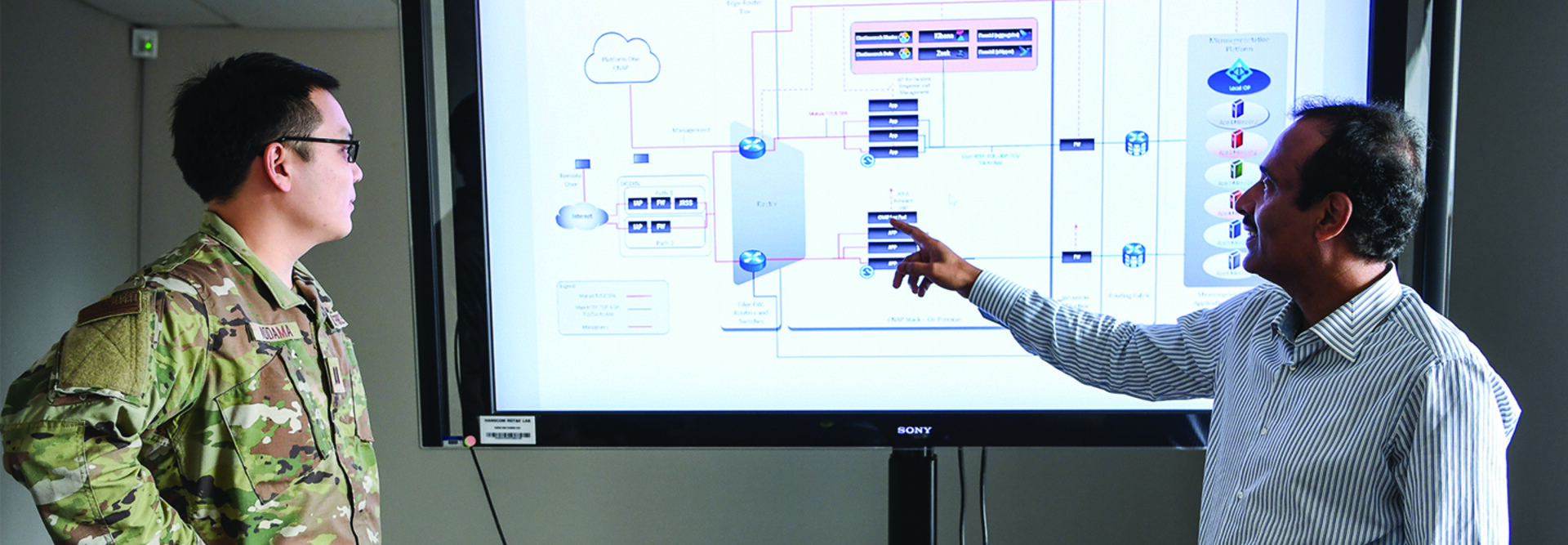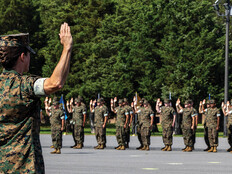Creating a Culture More Conducive to Fielding Timely Software
Over the past several decades, the Air Force has steered toward resource efficiency and risk aversion. This has resulted in siloed organizations, processes and a culture that is not conducive for the timely fielding of software and its supporting technologies.
How will adding to the bureaucracy help? I suggest that adding a position in and of itself does not add to bureaucracy because the person filling a position can either hinder or enable.
Sustained radical change of a system will not happen overnight. Why? Because culture beats strategy every time. Everyone in the system is responsible for its execution, and changing culture takes time because individual change is slow. If you buy into this reality, the benefits of a DAF software champion position — filled with the right person — outweigh the risks. He or she could provide value within our current system while simultaneously championing much needed change.
While the DAF’s ongoing optimization for GPC is tackling some organizational design overhaul at execution levels outside the Pentagon, details are still being worked out, and the jury is out on how the new organizations will react to the current Pentagon functional stovepipes and processes. Today, siloed functional areas interact through relatively rigid processes such as Planning, Programming, Budgeting and Execution for resourcing, Joint Capabilities Integration and Development System for requirements and the National Intelligence Priorities Framework, to name a few.
That said, the current environment of uncertainty doesn’t negate the need for a software champion; it does just the opposite. Major changes such as the ongoing GPC optimization are infrequent, typically aligned with major inflection points in history. The Cold War, the Gulf War and the Global War on Terrorism were such points. Arguably, the opportunity presented to us today is the first of the Digital Age, when software is pivotal to success. We have an opportunity to affect the outcome of current optimization with software in mind, amplifying the need for a loud software-focused voice.
DISCOVER: Here's what to expect from the White House's AI Action Plan.
Smartly Allocating Limited Resources
Beyond organizational design, resources play a massive role in bringing ideas into reality. But resources are not infinite. The Air Force must continuously make tough trade-off decisions to smartly allocate limited resources; with no software champion, a key voice in how and which resources are aligned is absent from this fight. While few DAF senior leaders in the Pentagon would argue against the criticality of software to success on the battlefield, no one has sole responsibility for it.
One could argue that this responsibility falls under the CIO or A6, which oversees all communication systems. However, my experience has been that their focus is security and defense of software and IT. This aligns with published documents such as the Air Force Doctrine Publication 3-30 – Command and Control, CIO Public Strategy, CIO LOE Objectives and DAF Zero Trust Strategy. Where does that leave software strategy, of which security is a subset? Whether it’s with the DAF CIO or across the DAF at large, in practice the software strategy and voice is more akin to a pickup game that results in a less-than-ideal effort; it has shown some progress in recent years, but not the results necessary for GPC.
One popular counter opinion is that software underpins all of our capabilities, so it’s everyone’s responsibility. While this assertion is grounded in the fact of software’s importance, it is at best a shaky argument against having a singular software voice within the DAF. While some groups address software through their functional lenses, this distributed responsibility model is incapable of driving a cohesive, purposeful strategy and design at the DAF level.
CONSIDER: Are citizen developers the future of agencies' digital transformations?
Giving the Software Voice an Equal Seat at the Table
In the absence of overhauling the current organizational landscape, the software voice must have an equal seat at the table. To be clear, I am not advocating for inflexible software mandates but rather pleading for software-focused leadership: peer leadership across senior leaders within the Pentagon major commands and combatant commands; outward- and upward-facing leadership with Congress, the defense industrial complex and private industry; and subordinate leadership through the delegation of authority and the accompanying accountability. This leadership would maintain oversight through clearly defined and communicated outcomes that align with a cohesive grand software strategy.
Software personifies the power of digitalization, offering the ability to inexpensively decompose ideas and processes, then enable their creative composition and rapid solution delivery. Yet, many of our most talented personnel now leading critical acquisitions cut their teeth on hardware-centric systems. People are often uncomfortable or inexperienced with freeing software from hardware constraints, resulting in more costly and less agile solutions.
With today’s acquisition culture equating higher cost to higher importance, the system has built-in resistance to change as our most talented acquisition personnel are assigned to the most expensive systems, which are hardware-centric, perpetuating the cycle. Akin to Billy Mitchell advocating that airpower can independently affect war outcomes, beyond being regulated to a support function of land and sea domains, software freed from hardware constraints can independently, rapidly and inexpensively deliver flexible operational capability.
A Chief Software Officer Could Focus on Talent Management
A properly resourced and empowered DAF-level software champion, such as a chief software officer, must focus on talent management to ensure that we have enough of the right individuals with the right training, education and experience to lead software efforts. Additionally, they must bridge the current gaps across functional policies and warfighting doctrine, and be the visionary voice to transform how we understand, organize and fight future wars, transcending the limits of hardware platforms.
To have success in the GPC, we can’t optimize for efficiency. Rather, warfighting capability (and by extension, the associated software) must be ready for an uncertain future. Agility, not efficiency, must be the focus so warfighting capability can adapt much faster than is possible today. We must think of software as more than just support for hardware platforms.
UP NEXT: These are the Navy's four big priorities for 2025, according to its CIO.











